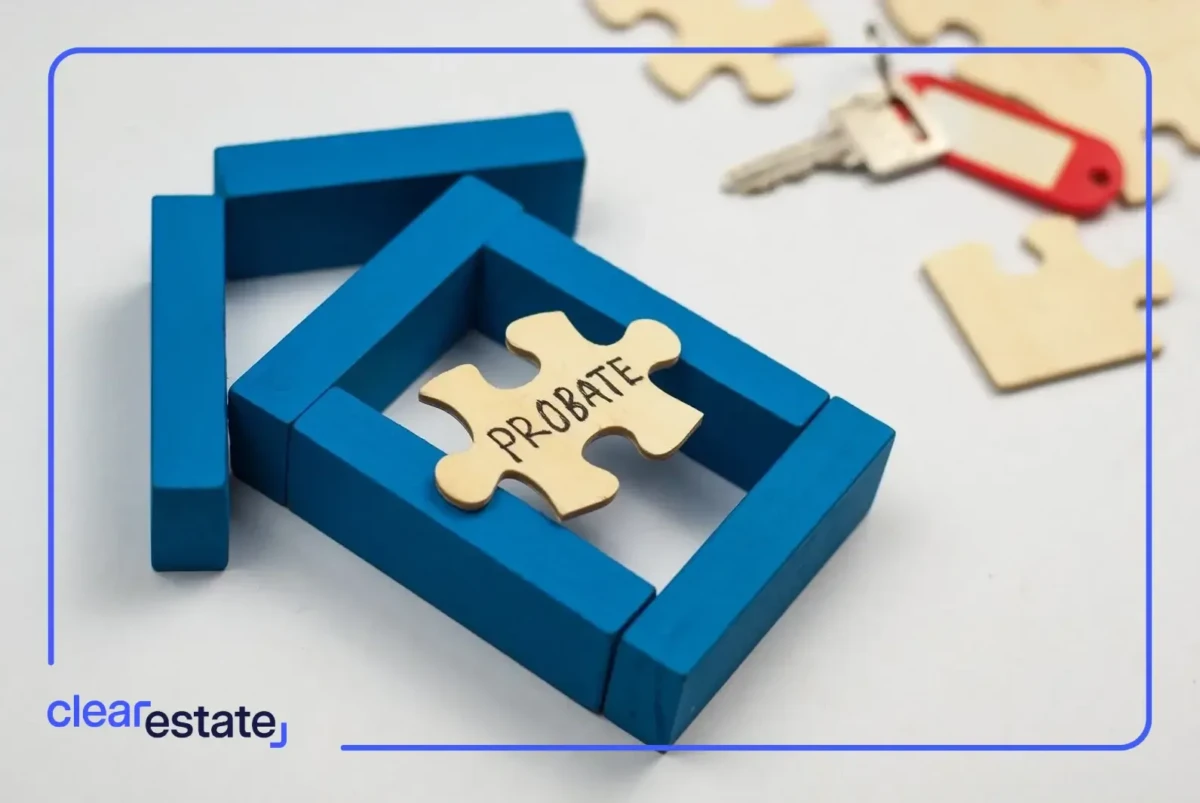Estate Settlement
Dec 04, 2024
How to Stop Mail for a Deceased Person: 5 Steps
Learn how to stop mail for a deceased person with our 5-step guide to protect their identity and ease estate management.
Step-by-step guide to probate.


Although there’s a debate to be had about how necessary probate actually is to settling an estate, the truth is that it’s become commonplace. Depending on the size and complexity of the estate, banks won’t allow you to transfer or access anything without the official stamp of approval from probate court. The fact that probate can often be confusing doesn’t make matters easier! That’s why we’re here to break down what exactly probate means, and what you can expect when going through probate.
When someone passes away, they can’t be the legal possessor of property and assets anymore. They also can’t have any debts anymore. These assets—and these debts—need to go somewhere, though.
Hopefully, the person who’s passed away managed to plan ahead and make a will. If the deceased had a complex estate—meaning if they owned property, had various investments, and a lot of personal assets—then going through probate is usually necessary in order to validate the will, thereby ensuring that everything is smoothly transferred over to the appointed beneficiaries. The probate court is also in charge of officially naming the appointed executor and authorizing them to deal with banks, insurance companies, administrators, and any outstanding tax issues.
Each state or province has its own specific rules regarding probate. However, an executor will generally need to go through probate in order to validate the will and get the authorization they require to do their job if the deceased had debt and/or had bank accounts, registered investments, or life insurance policies without a named beneficiary or at financial institutions that won’t hand over funds without going through probate. They mainly do this so that they can’t be sued in case the will is contested at some later point. Executors might also find themselves going through probate if the estate involves real estate that isn’t directly being passed down to a spouse or common-law partner.
The first step of going through probate requires you to ensure you’re applying for probate in the right place. You’ll have to file for probate in the province or territory where the deceased person was living at the time of their death.
Keep in mind that each province’s rules, approval body, process, and costs will differ. And since we’re on that subject, a quick note on costs: Probate is not free. You’ll have to pay probate fees or estate administration tax to the provincial or territorial government.
Probate fees are dependent on the size of the estate and on the state or province where the probate process is being conducted. Some Canadian provinces, like Alberta, charge as little as $35 for estates under $10,000, while some charge significantly higher. In Ontario, for instance, an estate worth $250,000 might rack up fees well over $3,000. Québec, on the other hand, charges no probate fees. In California, probate courts charge 4% of the first $100,000 of the estate. In Arizona’s Maricopa County, on the other hand, the court filing fees typically range from $266-$320.
The next step in the probate process will consist of authenticating the will. The most important document needed for the entire probate process, as well as for the executor themselves, is the deceased’s will. The executor will need to hand in the will so that it can get an official stamp of approval that banks will often request to see before handing over any cash.
This step will also determine if anyone contests the will, or if there are any objections to the executor nominated in the will. As you can imagine, as long as no complications arise, this step goes smoothly. If contentions arise, however, then lawyers may need to get involved, which can quickly become a costly affair.
Depending on the court, an executor may also have to file a death certificate along with the will.
Part of authenticating the will also consists of legally appointing the person who has been nominated in the will as the official executor of the estate. This might feel silly: You’re already named in the will, you already spoke to the deceased before they passed about your responsibilities, and you’re ready to take the next steps. But in many cases, banks, insurance companies, and other financial institutions won’t hand over a single cent or return your calls unless they have a piece of paper confirming that yes, you are indeed the executor and you’re here to act on behalf of the estate.
If there is no will, or if the will doesn’t name an executor, then things get a little more complicated. A legal process will be initiated to appoint an executor to settle the estate and decide how to distribute it. The appointed executor will most likely be the closest of kin. If this happens, you can expect to see much higher costs than during a normal probate process.
In some provinces, the executor will need to have a list of assets from the estate in order to apply for probate. Either way, having a detailed and comprehensive list of all of the deceased assets as well as their value will be instrumental in calculating the value of the estate. The assets can range from bank and investment accounts, insurance policies, or safe deposit boxes to heirlooms such as jewelry and artwork or property deeds. The value of the assets will then need to be appraised. Courts will also probably require you to explain how the appraisal was conducted.
If the deceased had debt before they passed, then the executor will need to reach out to the creditors and settle the debt. Debts are usually paid with funds from the estate.
On top of filing any outstanding tax returns the deceased may have had (including a terminal return) and submitting an estate income tax return, the executor will also have to take care of probate taxes. In many states and provinces, a tax must be paid when an executor applies for probate.
Once all fees and debts have been taken care of, the executor can petition the court to finally distribute the remaining assets to the designated beneficiaries. The court will usually only grant this step once the executor has provided the probate court with a detailed list of every financial transaction that’s been done on behalf of the estate throughout the probate process.
As you can imagine, this process is not swift. Making a detailed inventory of assets, having them appraised, and making sure you have ample documentation for every single step you’ve taken will take some time. Most probate proceedings take several months and can even stretch into a year. And that’s assuming that everything is going smoothly and no one is contesting the will.
Unfortunately going through probate is still a reality for many executors dealing with more complex estates. That’s why ClearEstate wants to make the process as painless and uncomplicated as possible, and help you save time while avoiding unnecessary fees.
 Simplify Probate Today
Simplify Probate Today
Get expert guidance from our specialists who've helped 10,000+ families.
Book a free consultation